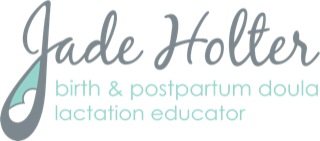Postpartum depression happens in the first couple months after baby’s birth, during the time of sleep deprivation and the transition into parenthood. Fact: Postpartum mood and anxiety disorders can look very different from typical depression and can appear anytime during the first two years after childbirth. PMAD’s can appear as anxiety, sleeplessness, obsessive compulsive disorder, etc., Approximately 85% percent of women get the baby blues a few days after birth which can look like sadness and overwhelm. The baby blues are a natural hormonal balancing act after birth while the mothers body is trying to regulate itself and will go away after two to three weeks. If symptoms persist or worsen see your doctor.
Picking up your baby when she cries will create bad habits. Fact: During the first months of life it is necessary for you to respond to your babies cues and to comfort them when they cry. Picking up your baby teaches them that they are safe and creates a more secure toddler and adult.
Never wake a sleeping baby. Fact: In the first few weeks your breastfed newborn needs to eat every two to three hours. If they are sleeping any longer than that and not waking up on their own, you will need to gently nudge them awake for a feeding. Breastmilk is digested very fast and creates energy for the baby to wake up and eat. If baby does not get enough calories they will not have the energy to wake themselves up to eat.
It is normal to experience pain or incontinence in your pelvic floor after childbirth. Fact: Some women experience pelvic floor pain for months or years after childbirth, these symptoms are often caused by tight, weak or separated pelvic muscles. A physical therapist specializing in pelvic floor rehab can identify any muscles and help to strengthen or release them.
Short naps for a new mother are beneficial during postpartum recovery. Fact: A nap is most beneficial when one gets the full sleep cycle which is 90 minutes and includes both light and deep stages of sleep.

